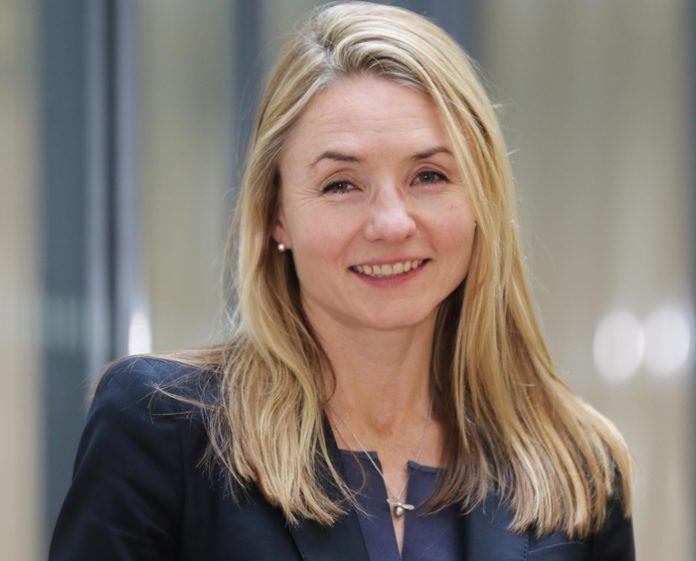
The UK economy looks likely to avoid a double-dip recession thanks to a better-than-predicted performance in November 2020, according to the EY ITEM Club’s Winter Forecast, published today.
With the economy contracting by just 2.6% in November, despite the impact of a month-long England-wide lockdown and other restrictions across the UK, the EY ITEM Club now expects the economy to have had a flat performance across the fourth quarter. While the latest COVID-19 restrictions are expected to cause a 3% to 4% contraction in Q1 2021, the absence of a contraction in Q4 2020 means the UK may – just – avoid its first double-dip recession since the 1970s.
Vaccine roll-outs are underway and a Free Trade Agreement with the EU has been secured, putting the UK in position for a steady economic recovery from Q2 2021 onwards. The latest forecast predicts growth of 5.0% in 2021, 6.5% in 2022, 2.0% in 2023 and 1.8% in 2024. With a better-than-expected Q4 performance and the Office for National Statistics revising earlier GDP data upwards, the EY ITEM Club now estimates that the UK economy shrank by a record 10.1% in 2020, an improvement on its December forecast of an 11.6% contraction.
Positively, the point at which the UK economy is expected to regain its pre-COVID-19 peak is inching forward, with this now forecast to happen in Q3 2022 – an improvement from the 2023 and 2024 dates predicted in earlier forecasts.
Howard Archer, Chief Economic Advisor to the EY ITEM Club, comments: “The UK economy has demonstrated remarkable resilience in recent months and the impact of recent lockdowns has been nowhere near what we saw in April. Over the course of 2020, the economy has become quicker to adapt to new COVID-19 restrictions and while new restrictions may still cause disruption, lessons learned from previous lockdowns are rapidly put into place.
“The prospects for recovery are looking brighter. Once the economy has negotiated what is likely to be a challenging first quarter of this year, it will undoubtedly benefit from the vaccine roll-out helping to boost consumer and business confidence. The combination of vaccines, a UK-EU trade deal and previous lockdown experience means there’s much less uncertainty out there. Excluding the first quarter, the UK is looking at two years of strong growth.”
Unemployment to peak at 7% in mid-2021 while consumer spending set for growth
The EY ITEM Club forecasts that unemployment will peak at 7% in mid-2021 before starting to fall towards the end of the year. This would be a significant improvement on the 7.7% unemployment rate peak expected in the Autumn Forecast and the 9% peak expected in the Summer Forecast.
The EY ITEM Club predicts that consumer spending likely contracted again in Q4 2020 after bouncing back strongly in Q3 from a record contraction in Q2. The EY ITEM Club estimates that consumer spending contracted a record 12.6% over 2020 but will be up 5.1% in 2021 and 7.4% in 2022.
Business investment set to accelerate in 2021 and 2022
Business investment is expected to improve in 2021 and then accelerate in 2022 as confidence is lifted by a firmer and more settled business environment. The EY ITEM Club forecasts business investment to expand 14.2% in 2022 following a 1.8% increase in 2021 – 2021’s low overall growth figure masks improvement throughout the year.
Karen Kirkwood, Office Managing Partner at EY in the South West and Wales, said: ““There is positivity and opportunities for growth within key sectors in the region. The South West and Wales have diverse economies, with some sectors dealing well with recent challenges. The onus now will be on recovery and strategic transformation.
“Whereas recovery has the potential to be slower in some sectors, such as hospitality and leisure, any long-lasting international travel restrictions could support domestic UK tourism, which would be a potential positive for the South West and Wales. There is now a chance for businesses to press the reset button, look closely at how they can undertake broader strategic planning and, importantly, become more agile for the future.”
“Businesses need to be prepared. Now is the time to firm up post-pandemic plans as the shape of the future economy becomes clearer.”
Public finances and decisions for the Government
The EY ITEM Club forecasts public spending to rise 6.3% in 2021, while government investment is expected to be up 8.2% as the Government seeks to put the economy on a firm footing ahead of action to repair the impact of the pandemic on the public finances. Additionally, the EY ITEM Club expects monetary policy to remain accommodating for growth, although the need for further stimulus from the Bank of England is questionable.
Karen adds: “Heading into the Budget on 3 March, declining uncertainty and a strong growth forecast mean there is a good platform for the Chancellor to articulate a clear plan for an orderly reduction of public support for the economy at the same time as articulating a future vision. It will be important to see plans for a green recovery, steps to level up the economy and deliver inclusive growth, as well as a vision for how to ensure the UK economy remains internationally competitive. The right approach could support the recovery and, significantly, help Britain to build back better.”
The EY ITEM Club’s latest forecast does not rule out the Bank of England adopting negative interest rates, although it is predicted that it is more likely a 0.10% interest rate will be maintained for some time to come.
















